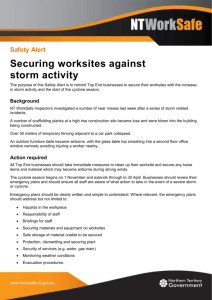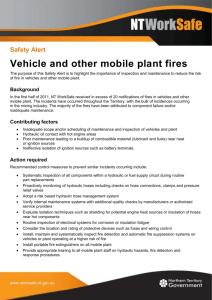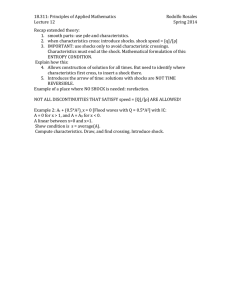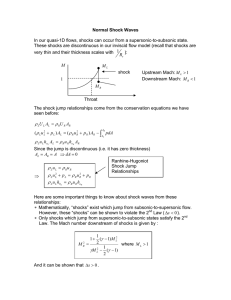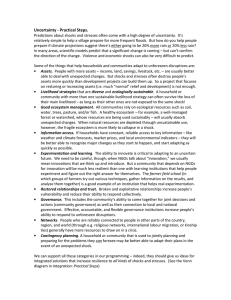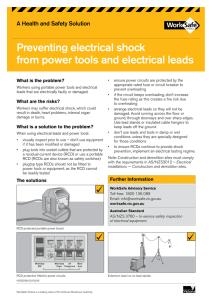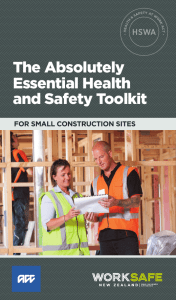Safety alert - Electric shock hazards associated with
advertisement
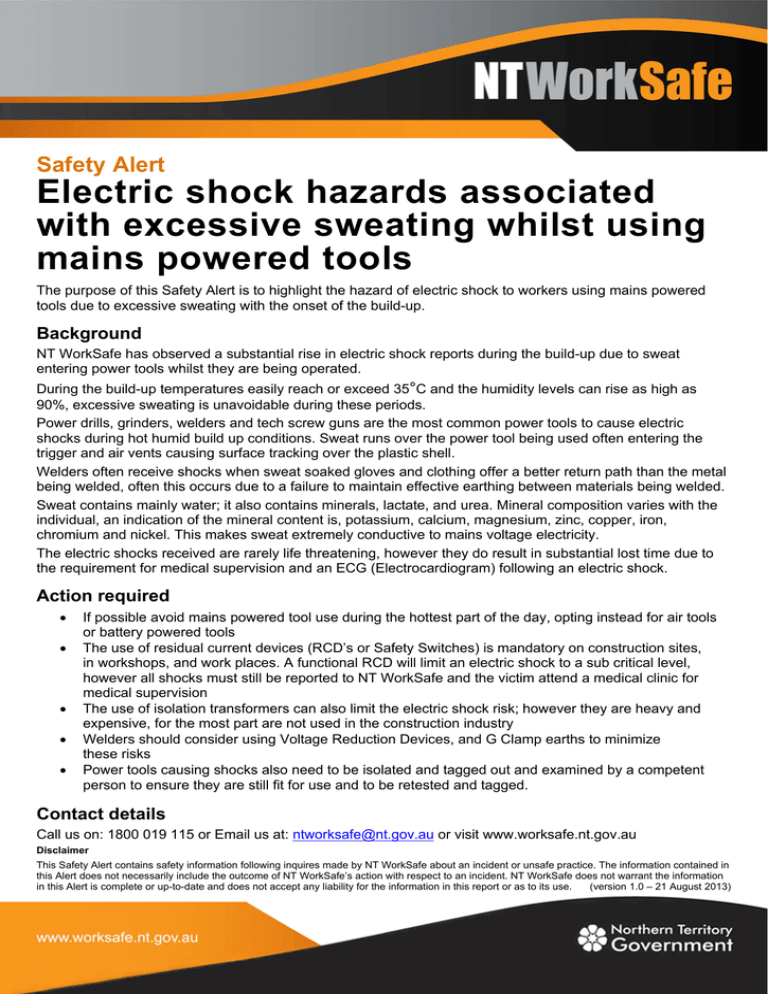
Safety Alert Electric shock hazards associated with excessive sweating whilst using mains powered tools The purpose of this Safety Alert is to highlight the hazard of electric shock to workers using mains powered tools due to excessive sweating with the onset of the build-up. Background NT WorkSafe has observed a substantial rise in electric shock reports during the build-up due to sweat entering power tools whilst they are being operated. During the build-up temperatures easily reach or exceed 35°C and the humidity levels can rise as high as 90%, excessive sweating is unavoidable during these periods. Power drills, grinders, welders and tech screw guns are the most common power tools to cause electric shocks during hot humid build up conditions. Sweat runs over the power tool being used often entering the trigger and air vents causing surface tracking over the plastic shell. Welders often receive shocks when sweat soaked gloves and clothing offer a better return path than the metal being welded, often this occurs due to a failure to maintain effective earthing between materials being welded. Sweat contains mainly water; it also contains minerals, lactate, and urea. Mineral composition varies with the individual, an indication of the mineral content is, potassium, calcium, magnesium, zinc, copper, iron, chromium and nickel. This makes sweat extremely conductive to mains voltage electricity. The electric shocks received are rarely life threatening, however they do result in substantial lost time due to the requirement for medical supervision and an ECG (Electrocardiogram) following an electric shock. Action required If possible avoid mains powered tool use during the hottest part of the day, opting instead for air tools or battery powered tools The use of residual current devices (RCD’s or Safety Switches) is mandatory on construction sites, in workshops, and work places. A functional RCD will limit an electric shock to a sub critical level, however all shocks must still be reported to NT WorkSafe and the victim attend a medical clinic for medical supervision The use of isolation transformers can also limit the electric shock risk; however they are heavy and expensive, for the most part are not used in the construction industry Welders should consider using Voltage Reduction Devices, and G Clamp earths to minimize these risks Power tools causing shocks also need to be isolated and tagged out and examined by a competent person to ensure they are still fit for use and to be retested and tagged. Contact details Call us on: 1800 019 115 or Email us at: ntworksafe@nt.gov.au or visit www.worksafe.nt.gov.au Disclaimer This Safety Alert contains safety information following inquires made by NT WorkSafe about an incident or unsafe practice. The information contained in this Alert does not necessarily include the outcome of NT WorkSafe’s action with respect to an incident. NT WorkSafe does not warrant the information in this Alert is complete or up-to-date and does not accept any liability for the information in this report or as to its use. (version 1.0 – 21 August 2013)
